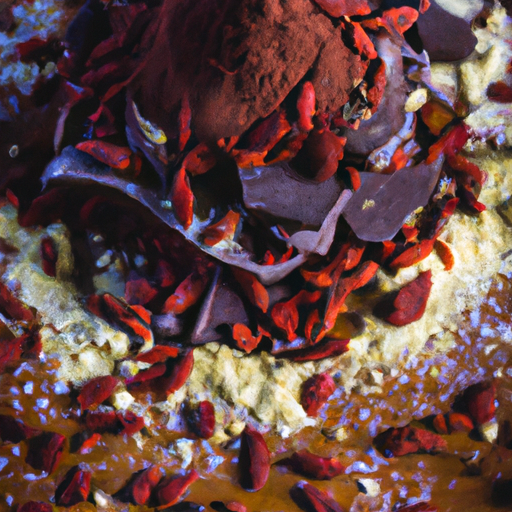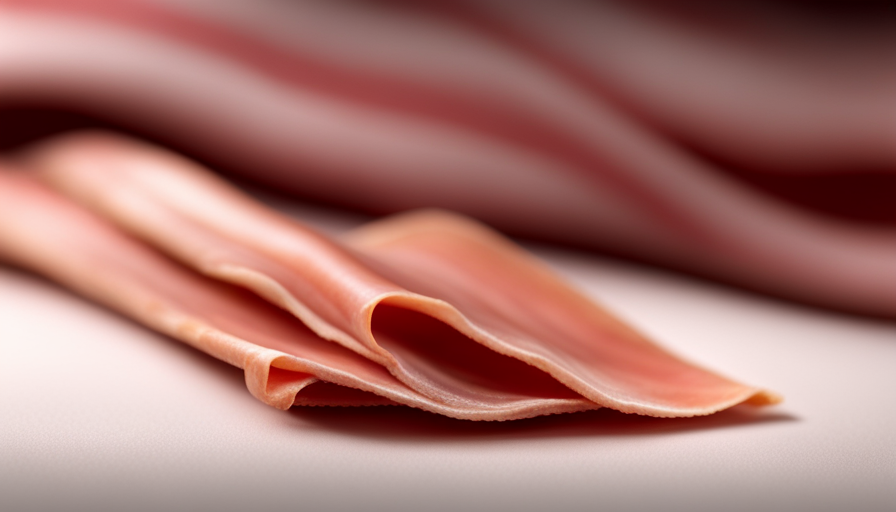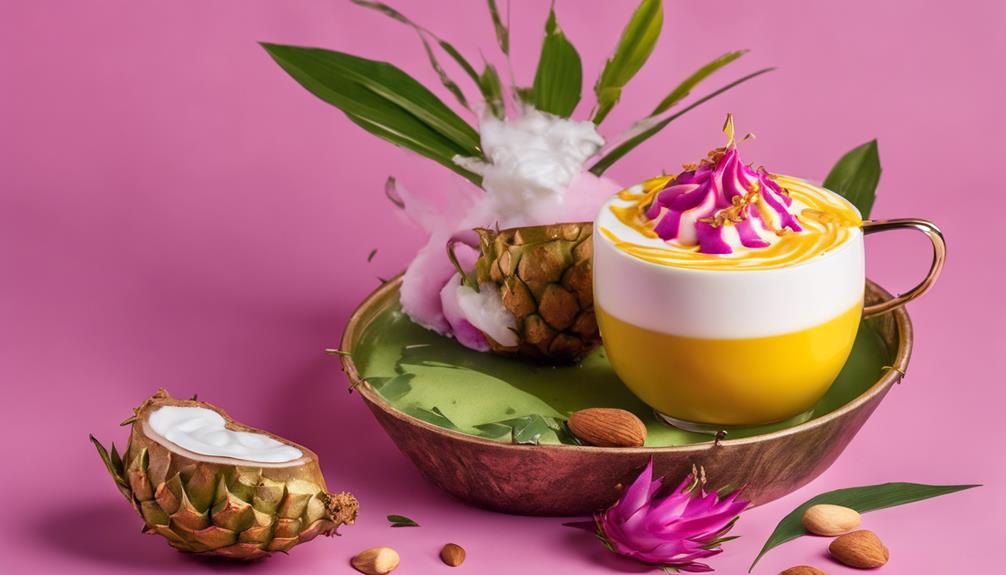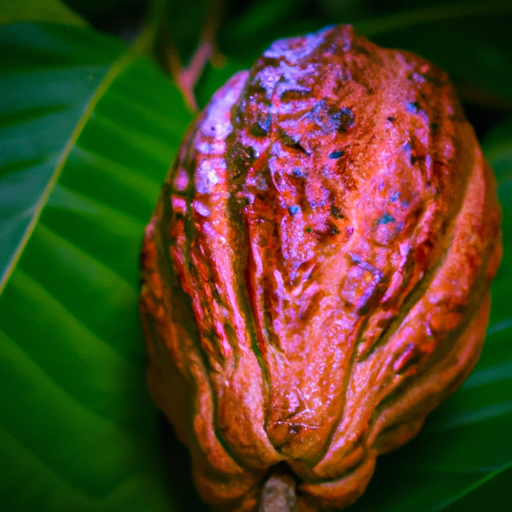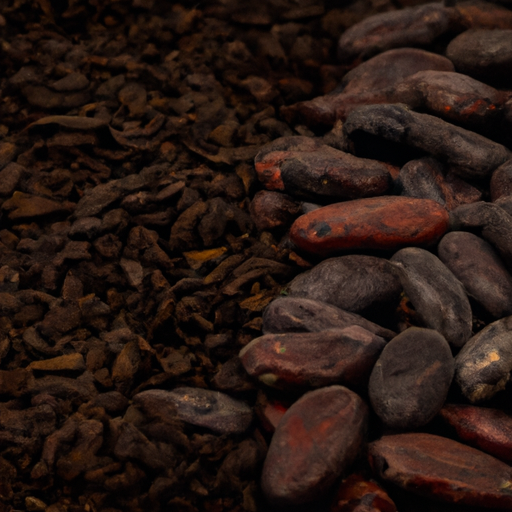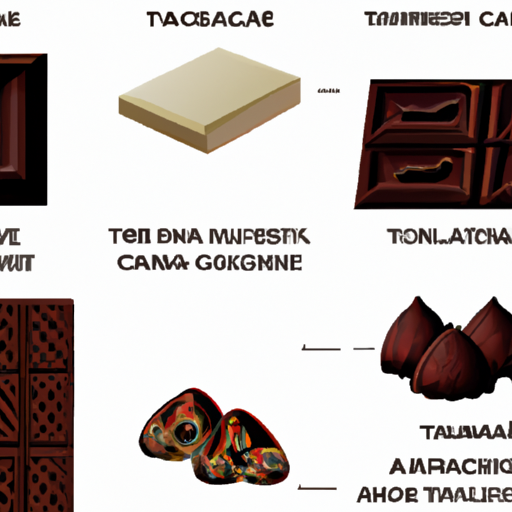Have you ever thought about what sets raw cacao apart? Let me enlighten you, there’s more to this delightful treat than what you might think. Raw cacao isn’t just a tasty treat, but it also offers a range of nutritional benefits.
In this article, we will explore the amazing benefits of raw cacao and why it should be a part of your diet.
First and foremost, raw cacao is loaded with antioxidants, which help fight off harmful free radicals in the body. These antioxidants can have a positive impact on your mood, as they stimulate the production of feel-good chemicals in the brain. Additionally, raw cacao has been linked to improved cardiovascular health and is a rich source of essential minerals.
But that’s not all – raw cacao may also have anti-inflammatory effects and can boost brain function and cognitive performance. It even enhances exercise performance and aids in post-workout recovery. With its versatility, you can incorporate raw cacao into your diet in a variety of delicious ways.
So, if you’re ready to discover the wonders of raw cacao, let’s dive in and uncover all the reasons why it’s good for you.
Key Takeaways
- Boosts exercise performance and promotes quicker recovery
- Rich in flavonoids, improving blood flow and endurance
- Nourishes and hydrates the skin, providing protection against environmental damage
- Can be used in various recipes and routines, serving as a natural and healthy alternative to synthetic stimulants
Nutritional Profile of Raw Cacao
Raw cacao is bursting with essential nutrients that’ll make your taste buds dance with delight. This superfood is packed with nutritional benefits and health advantages.
First and foremost, raw cacao is a rich source of antioxidants, which help protect our bodies from harmful free radicals. These antioxidants have been linked to a reduced risk of chronic diseases such as heart disease and cancer.
Additionally, raw cacao is high in minerals like magnesium, iron, and zinc, which are essential for optimal health. It also contains fiber, which aids in digestion and promotes a healthy gut.
The presence of flavonoids in raw cacao has been associated with improved cognitive function and mood enhancement.
So, if you’re looking for a delicious way to boost your overall well-being, raw cacao is the perfect choice.
Now, let’s dive into the antioxidant power of raw cacao.
Antioxidant Power of Raw Cacao
Indulge in the velvety sweetness of this decadent treat, and let the antioxidant-rich elixir transport you to a world of vibrant health and youthful vitality.
Raw cacao is not only a delicious ingredient, but it also packs a powerful punch when it comes to antioxidants. These antioxidants help fight against free radicals, which can cause damage to our cells and contribute to aging and disease.
Incorporating raw cacao into your diet can provide a wide range of health benefits. In addition to its culinary uses, raw cacao has been linked to improved skin health. Its high antioxidant content may help protect the skin against oxidative stress and promote a healthy complexion.
So, while you enjoy the rich flavor of raw cacao, know that it is also nourishing your body from the inside out.
Now, let’s explore the potential mood-boosting effects of this incredible superfood.
Potential Mood-Boosting Effects
Experience a burst of joy and uplifted spirits as you savor the velvety sweetness of this decadent treat, allowing the potential mood-boosting effects of cacao to transport you to a world of pure bliss.
Research suggests that cacao may have a positive impact on mental health by enhancing mood and reducing stress.
- Cacao contains compounds such as phenylethylamine, which can stimulate the release of endorphins, the ‘feel-good’ hormones in our brains.
- The flavonoids found in cacao have been linked to improved cognitive function and reduced symptoms of depression and anxiety.
- Cacao also contains anandamide, a neurotransmitter that can promote feelings of happiness and relaxation.
By incorporating cacao into your diet, you may experience a natural way to enhance your mood and alleviate stress.
Now, let’s delve into the next section about the cardiovascular health benefits of cacao.
Cardiovascular Health Benefits
Incorporating cacao into your diet can potentially improve cognitive function, reduce symptoms of depression and anxiety, and promote feelings of happiness and relaxation, while also providing cardiovascular health benefits.
Raw cacao is rich in flavanols, which have been shown to have positive effects on heart health. Flavanols help improve blood flow, reduce inflammation, and lower blood pressure, all of which contribute to a healthier cardiovascular system. Additionally, studies have found that regular consumption of raw cacao may help reduce the risk of heart disease and stroke.
It is important to note that the cardiovascular benefits are more pronounced when consuming raw cacao, as processing methods can decrease the flavanol content. Therefore, opting for raw cacao is crucial to reap the full cardiovascular health benefits.
Transitioning into the subsequent section, raw cacao is also a rich source of essential minerals.
Rich Source of Essential Minerals
Raw cacao is a rich source of essential minerals, including magnesium, iron, potassium, and calcium. These minerals are vital for maintaining proper bodily functions. Magnesium, for example, plays a key role in regulating blood pressure and supporting cardiovascular health. Additionally, raw cacao contains antioxidants that can help protect the skin from damage caused by free radicals, promoting a more youthful and radiant complexion.
Incorporating raw cacao into desserts provides a healthier alternative to traditional sweets. Whether enjoyed in a smoothie or used as a substitute for cocoa powder in baking, raw cacao adds a delicious and nutritious twist to your favorite treats.
Transitioning into the next section, raw cacao also shows potential anti-inflammatory effects.
Potential Anti-inflammatory Effects
Improve your overall well-being by indulging in the potential anti-inflammatory effects of cacao, which can help alleviate discomfort and promote a healthier, more vibrant you. Research evidence suggests that cacao contains various compounds with anti-inflammatory properties, such as flavonoids and polyphenols. These compounds have been shown to inhibit the production of inflammatory markers in the body, potentially reducing the risk of chronic inflammation and related health conditions. Additionally, cacao’s antioxidant content may also contribute to its anti-inflammatory effects by neutralizing harmful free radicals.
To better visualize the essential minerals found in cacao, refer to the table below:
| Essential Minerals | Amount per 100g | % Daily Value |
|---|---|---|
| Magnesium | 499mg | 119% |
| Iron | 13.9mg | 77% |
| Zinc | 6.8mg | 62% |
| Copper | 3.8mg | 423% |
These amounts highlight the significant contribution of cacao to our daily mineral needs.
Moving forward, let’s explore how cacao boosts brain function and cognitive performance.
Boosts Brain Function and Cognitive Performance
Enhance your mental acuity and sharpen your cognitive abilities with the brain-boosting power of cacao. Raw cacao has been found to have positive effects on brain health and memory improvement. Here are five key benefits:
-
Improved blood flow to the brain: The flavonoids in cacao increase blood flow, delivering essential nutrients and oxygen to the brain.
-
Enhanced cognitive function: Cacao contains compounds that enhance cognitive function, including increased focus, attention, and mental clarity.
-
Neuroprotective effects: The antioxidants in cacao protect the brain from oxidative stress and reduce the risk of age-related cognitive decline.
-
Mood enhancement: Cacao stimulates the production of endorphins and serotonin, improving mood and promoting feelings of well-being.
-
Memory improvement: Studies suggest that cacao may improve memory and overall cognitive performance.
By incorporating raw cacao into your diet, you can support your brain health and experience these cognitive benefits.
This sets the stage for the subsequent section about how cacao enhances exercise performance and recovery.
Enhances Exercise Performance and Recovery
Get ready to take your workouts to the next level and bounce back faster with the incredible power of cacao. It boosts exercise performance and promotes quicker recovery. Raw cacao contains a variety of compounds that provide numerous benefits for athletes and those looking to enhance their physical performance.
Firstly, raw cacao is rich in flavonoids. These compounds have been shown to improve blood flow, increase oxygen delivery to muscles, and enhance endurance.
Additionally, cacao is a natural source of caffeine. It provides a natural energy boost without the jitters associated with synthetic stimulants.
Moreover, the high antioxidant content of cacao helps to reduce exercise-induced oxidative stress and inflammation. This aids in faster recovery and reduces muscle soreness.
Incorporating raw cacao into your pre-workout or post-workout routine can significantly enhance your exercise performance and aid in recovery.
Now, let’s explore the delicious and versatile ways to incorporate raw cacao into your diet.
Delicious and Versatile Ways to Incorporate Raw Cacao into Your Diet
Indulge in the delectable and creative ways to infuse the power of nature’s chocolate into your everyday meals and treats. Here are four delicious and versatile ways to incorporate raw cacao into your diet:
-
Raw cacao in savory dishes: Don’t limit yourself to just sweet treats. Add a touch of raw cacao powder to your chili, marinades, or spice rubs for a rich and complex flavor. It pairs well with savory ingredients like mushrooms, garlic, and spices.
-
Raw cacao in beauty and skincare products: Raw cacao is not only good for your taste buds but also for your skin. Look for beauty products that contain raw cacao butter or powder, as it can help nourish and hydrate your skin. Its antioxidants may also help protect against environmental damage.
So, whether you’re experimenting with new savory recipes or pampering your skin, raw cacao can be a versatile and delightful addition to your daily routine.
Frequently Asked Questions
Is raw cacao safe to consume for people with cardiovascular health issues?
Raw cacao can be safe for people with cardiovascular health issues. Studies suggest that consuming raw cacao may help lower blood pressure and improve cholesterol levels due to its high content of flavanols and antioxidants.
Can raw cacao consumption help with weight loss?
Raw cacao consumption may aid weight loss by improving insulin sensitivity and suppressing appetite. Research shows that individuals who consumed raw cacao had a 16% reduction in appetite and ate 17% fewer calories.
Does raw cacao have any potential side effects?
Raw cacao may have potential side effects. Some individuals may experience allergic reactions, such as itching or swelling. Additionally, due to its caffeine content, it may impact sleep patterns if consumed in large amounts.
How much raw cacao should be consumed daily to reap its health benefits?
To reap the health benefits of raw cacao, it is recommended to consume a moderate amount daily. However, it’s important to be mindful of potential risks, such as increased heart rate and gastrointestinal issues, if consumed in excess.
Are there any specific precautions or contraindications when using raw cacao as a supplement or in recipes?
When using raw cacao as a supplement or in recipes, it is important to be aware of potential precautions and contraindications. It is advised to consult with a healthcare professional, especially if you have pre-existing conditions or sensitivities.
How Can Raw Cacao Benefit My Overall Health and Well-being?
Raw cacao offers numerous benefits for overall health and well-being. Packed with antioxidants, it can help reduce inflammation and improve heart health. With its high magnesium content, benefits of raw cacao also include promoting muscle and nerve function. Additionally, it may enhance mood and brain function, making it a great addition to a healthy lifestyle.
Conclusion
In conclusion, raw cacao is not only delicious but also nutritious. It is packed with antioxidants, which are beneficial for overall well-being. Additionally, raw cacao has mood-boosting effects that can enhance your mood and make you feel good. Despite concerns about its calorie content, it’s important to remember that moderation is key when consuming raw cacao. By incorporating it into your diet in sensible portions, you can enjoy its many health benefits without worrying about weight gain. So don’t hesitate to indulge in some raw cacao and experience the joy it brings to your taste buds and your body.

